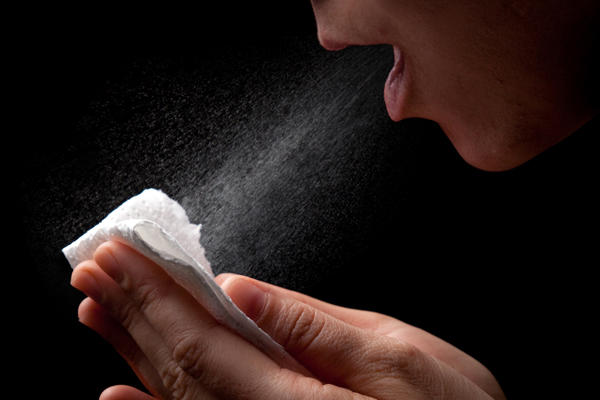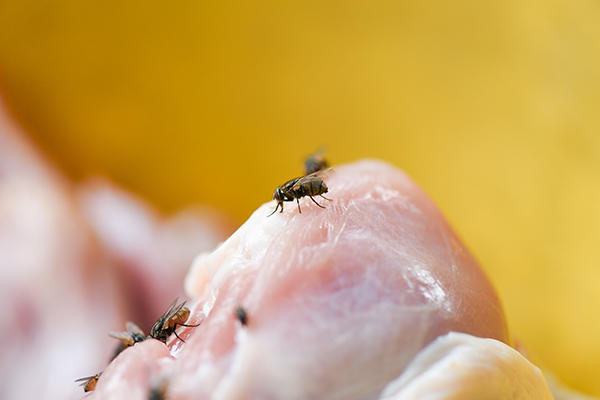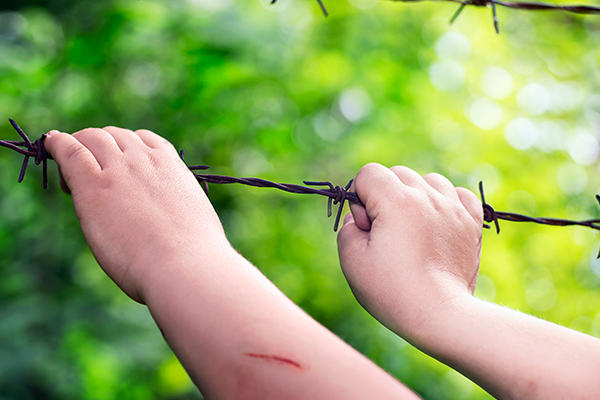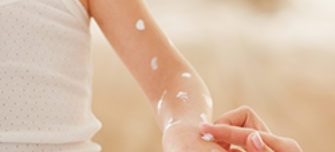Routes of transmission
The spreading of microbes is called transmission.
Transmission involves the following stages:
- Escape from the host or reservoir of infection (where the infectious agent normally lives and multiplies).
- Transport to the new host.
- Entry to the new host.
- Escape from the new host.
Different pathogens have different modes of transmission. For example respiratory pathogens are usually airborne and intestinal pathogens are usually spread by water or food.
The main routes of transmission are listed below.
Person-to-person
Touch
A cold can be caught by shaking the hand of a person who has a cold and who has just used their hand to wipe their dripping nose. The mucus from the nose will be teeming with cold virus particles such as the rhinovirus, which causes one third of colds in adults. Once the cold virus particles are on the hands of the second person they are contaminated and the virus can be transferred into their nose by their fingers.

Transmission by person to person contact. Measles, mumps and tuberculosis can be spread by coughing or sneezing. A cough or a sneeze can release millions of microbes into the air in droplets of mucus or saliva which can then infect somebody else if they breathe in the infected particles.
Contaminated blood or other bodily fluids
Hepatitis B and HIV can be spread through sexual intercourse or sharing used syringe needles contaminated with infected blood.
Saliva
A cold or the flu can be caught from the saliva of an infected person when you kiss them.
Air
Measles, mumps and tuberculosis can be spread by coughing or sneezing. A cough or a sneeze can release millions of microbes into the air in droplets of mucus or saliva which can then infect somebody else if they breathe in the infected particles.
Food
Microbes need nutrients for growth and they like to consume the same foods as humans. They can get into our food at any point along the food chain from ‘plough to plate’. Therefore great care must be taken at every stage of food production to ensure that harmful microbes are not allowed to survive and multiply. If they do they can cause the unpleasant symptoms of food poisoning such as sickness and diarrhoea when the contaminated food is eaten.

Microbes can be spread from one food to another during the preparation process, for example by unclean hands, or dirty kitchen utensils, and cause illness when those foods are eaten. This is known as cross-contamination.
Water
Some diseases are caused by drinking water that is contaminated by human or animal faeces, which may contain disease-causing microbes. Clean water, hygiene and good sewerage systems prevent the spread of water-borne diseases such as typhoid and cholera.
Insects
Insects are responsible for spreading many diseases. Malaria is spread from person to person by certain species of female mosquito carrying the protozoan Plasmodium falciparum. The parasite enters the human host when an infected mosquito takes a blood meal. Bubonic plague (Black Death) is a bacterial disease of rodents caused by Yersinia pestis. It can be spread to humans and other animals by infected rat fleas. People usually get plague from being bitten by a rodent flea that is carrying the plague bacterium.
Insects can also transmit pathogens to food; house flies are very good at spreading Salmonella and E. coli O157. They feed on faecal waste and transfer microbes from their feet and other body parts to food. The microbe does not invade or multiply inside the fly.
Fomites
This is a non-living object such as bedding, towels, toys and barbed wire that can carry disease-causing organisms. The fungus Trichophyton that causes athlete’s foot can be spread indirectly through towels and changing room floors.
The fungus thrives in the damp warm environment found between the toes. The skin between the fourth and fifth toe is usually affected first. A flaky itchy red rash develops. The skin becomes cracked and sore and small blisters may appear. If the infection is left untreated it can spread to other parts of the body.

Transmission by fomites (non-living objects) such as barbed wire.
A puncture wound on the finger caused by a prick from rusted barbed wire may result in tetanus due to infection by spores of the bacterium Clostridium tetani. The spores live mainly in soil and manure, but are also found on dirty or rusting metal objects. If untreated, tetanus (lockjaw) may be fatal.
-
Microbes and disease
Microbes that cause disease are called pathogens. Find out which microbe is responsible for malaria!
-
Immune system
An infection can be seen as a battle between the invading pathogens and host. How does the immune system work?
-
Vaccination
Just a shot in the arm – what do vaccines do?
-
Antibiotics
Antibiotics are powerful medicines that only fight bacterial infections.






